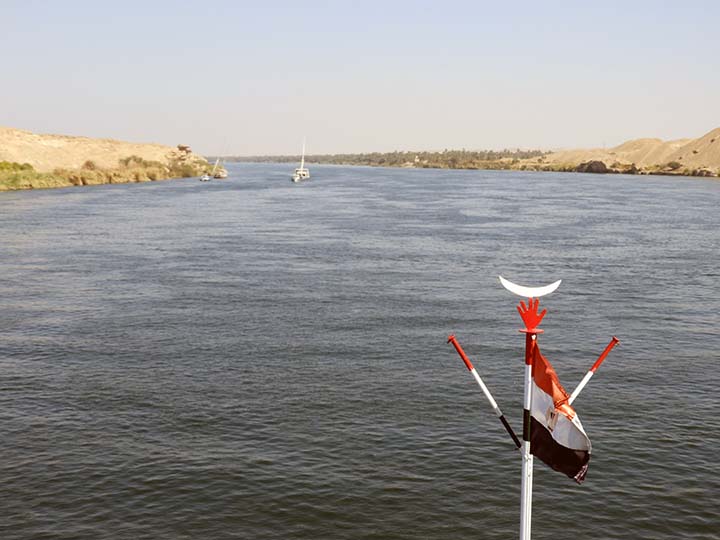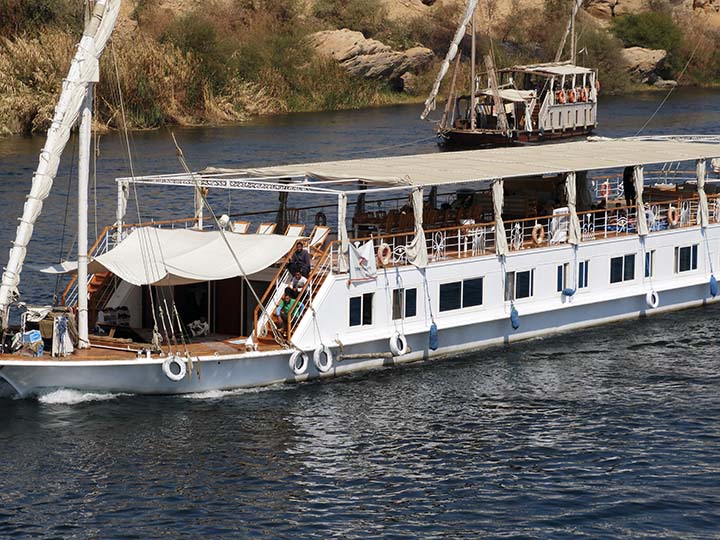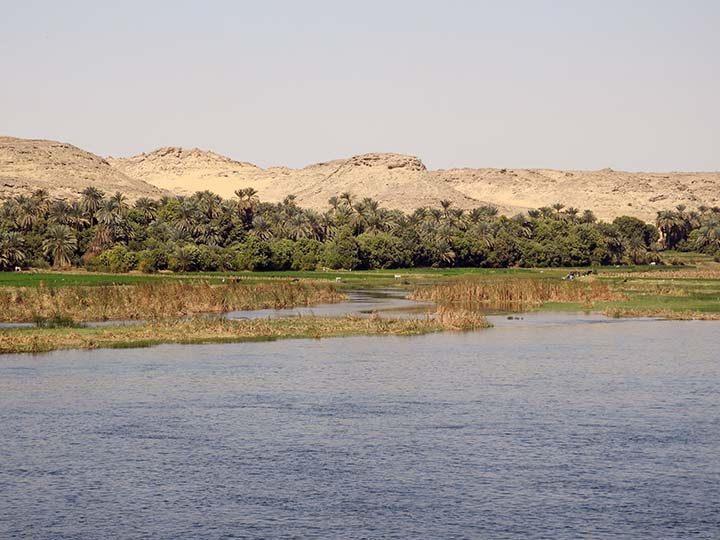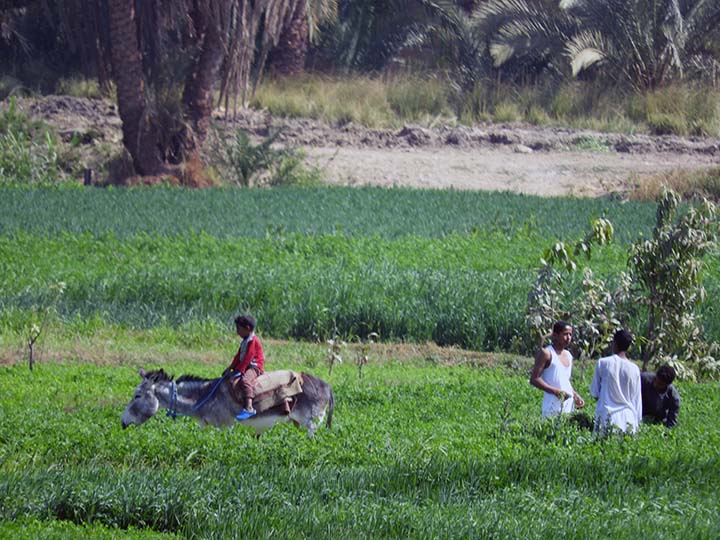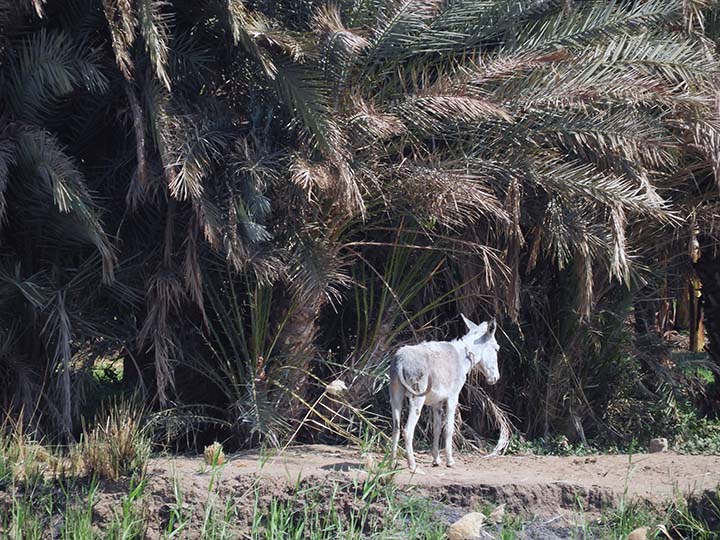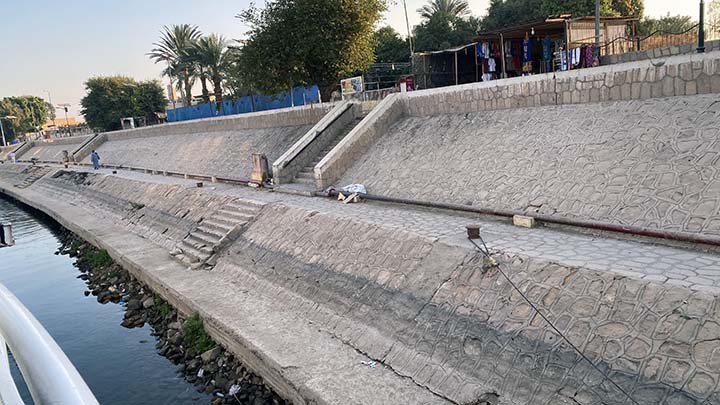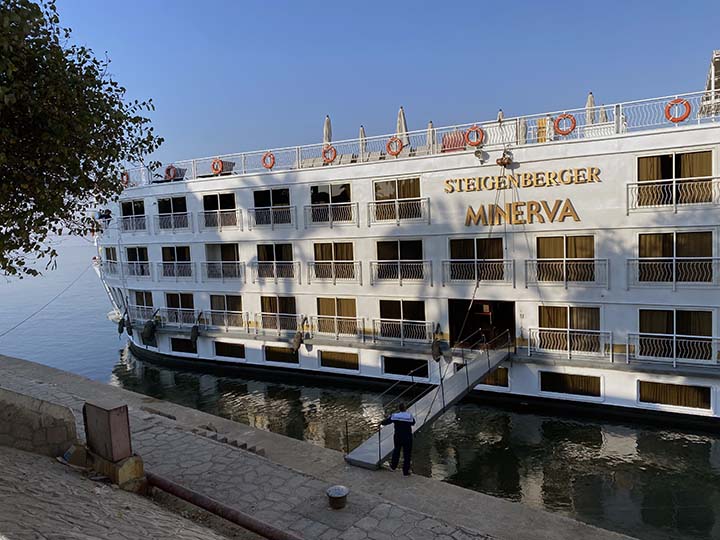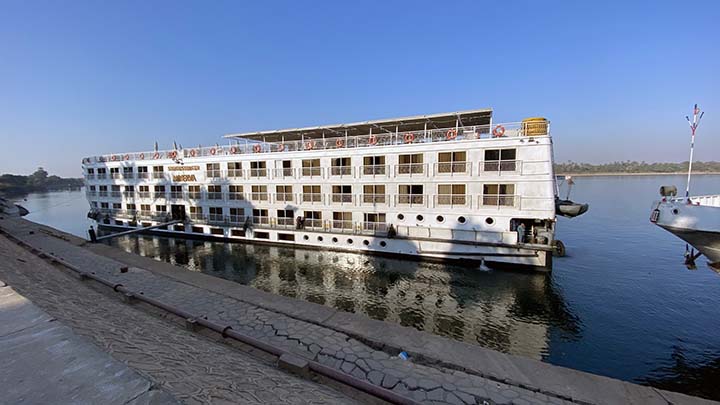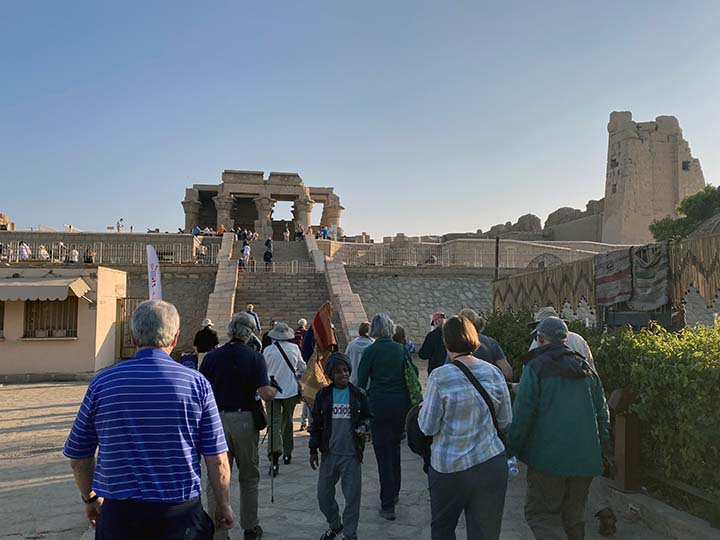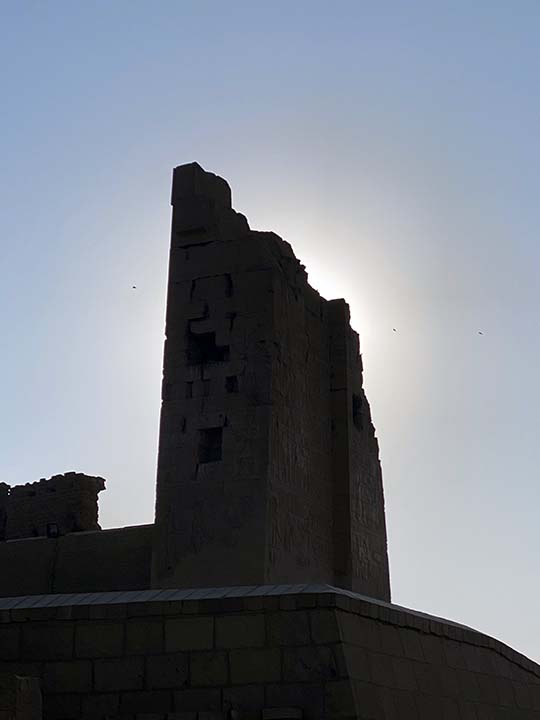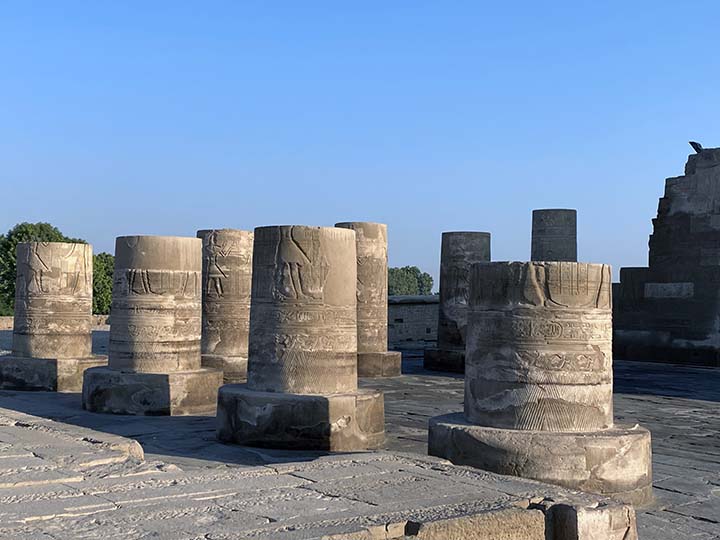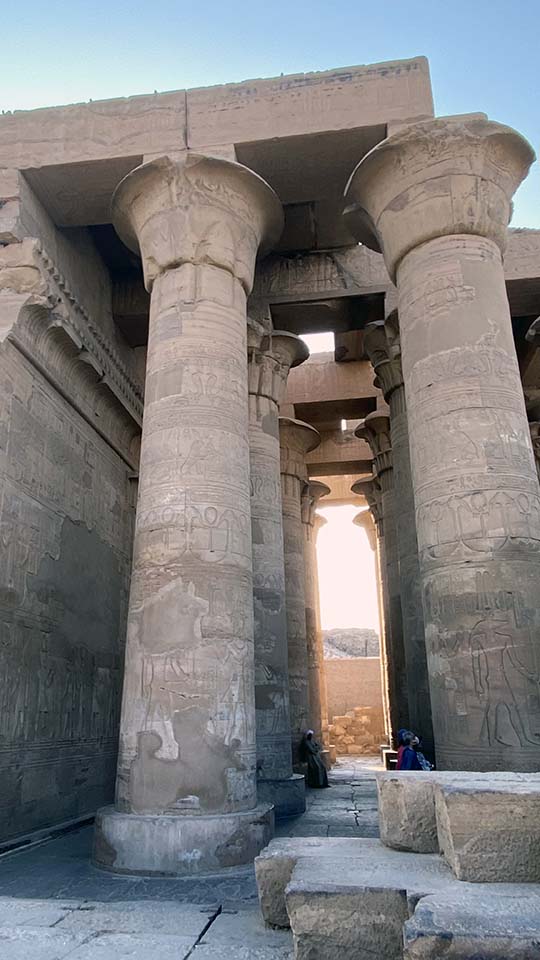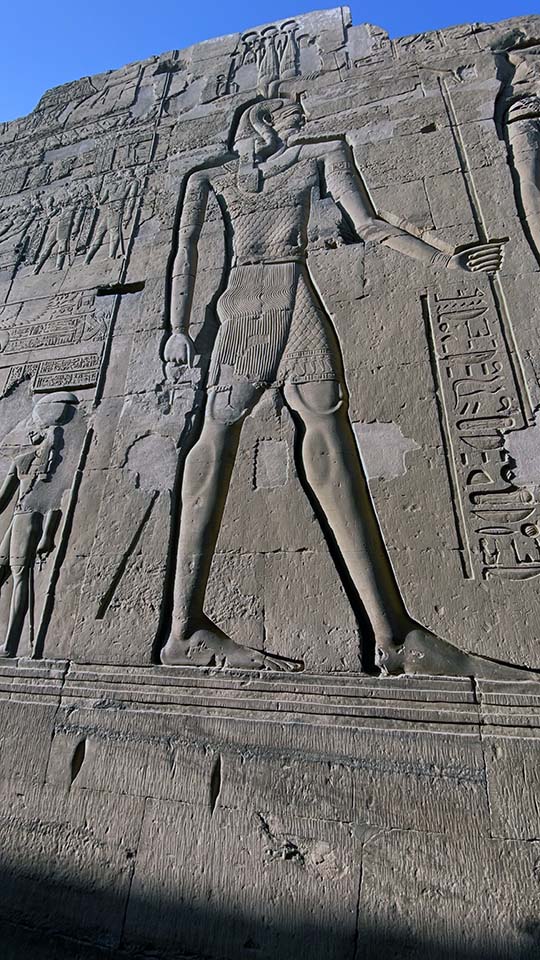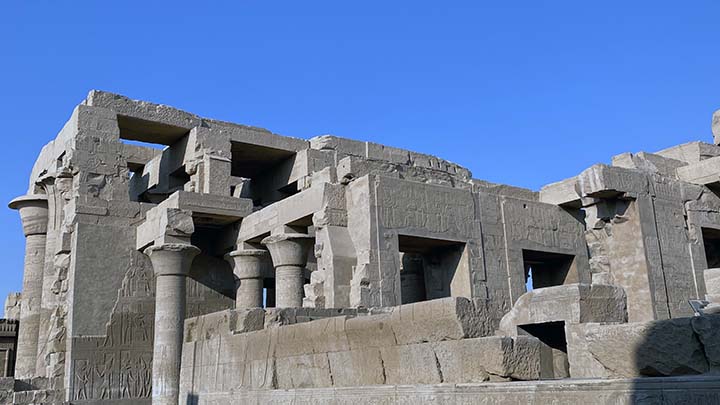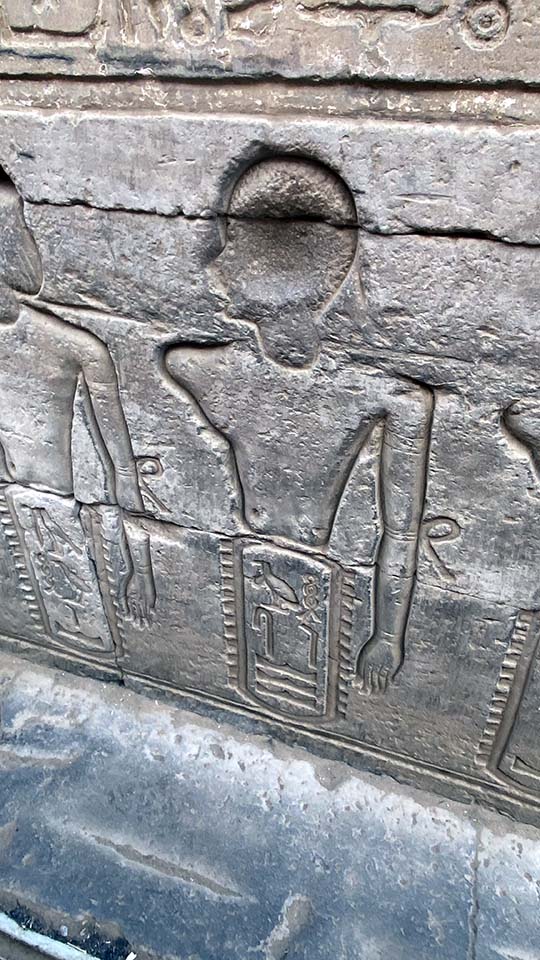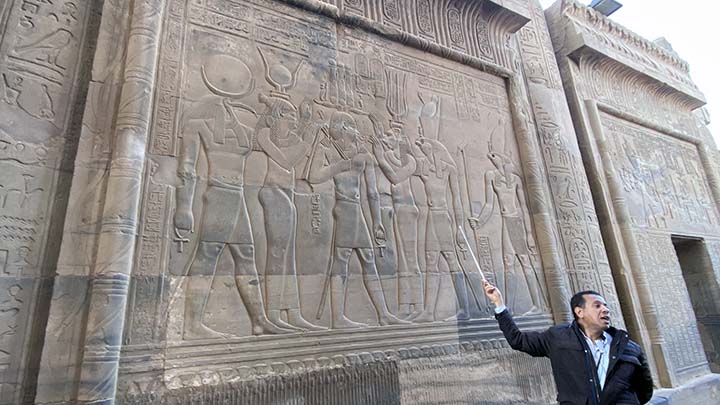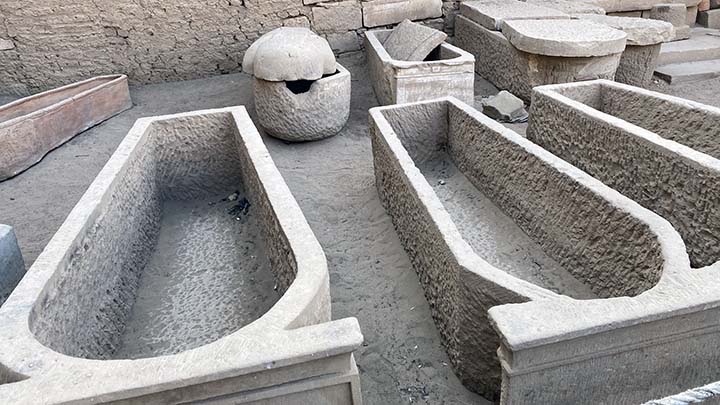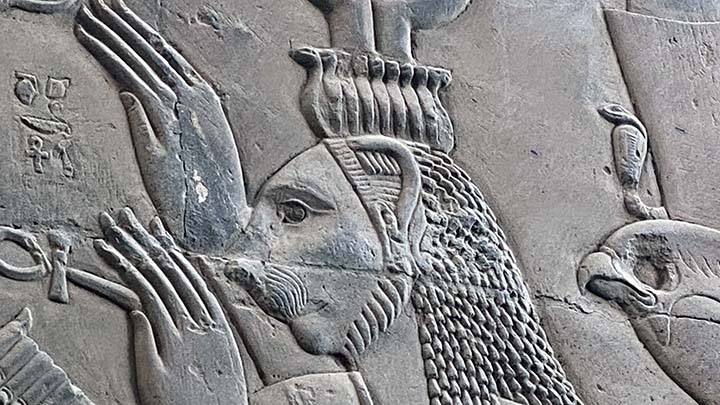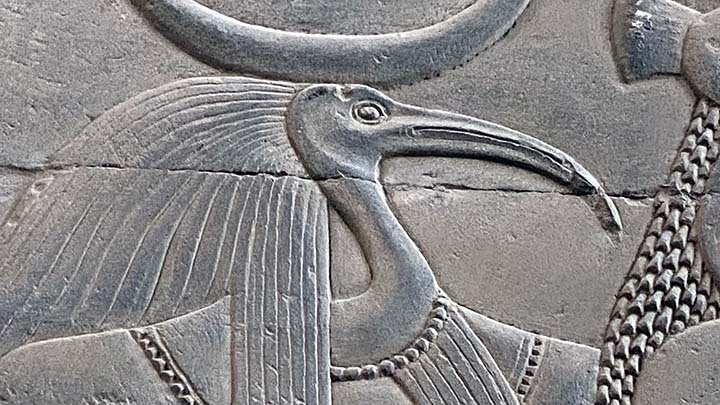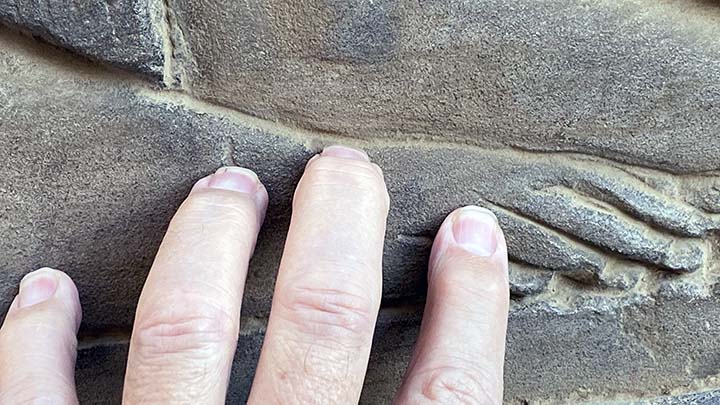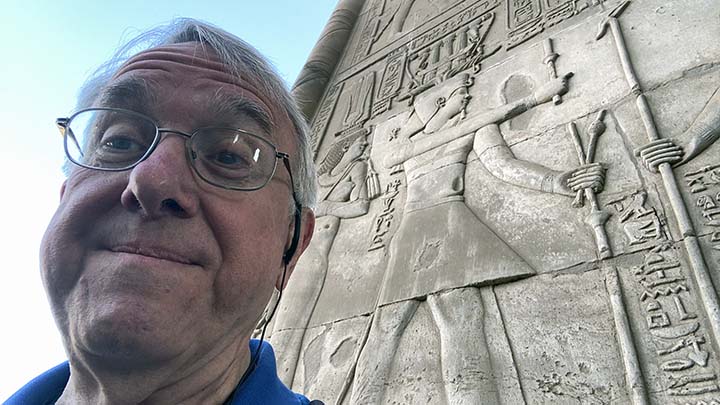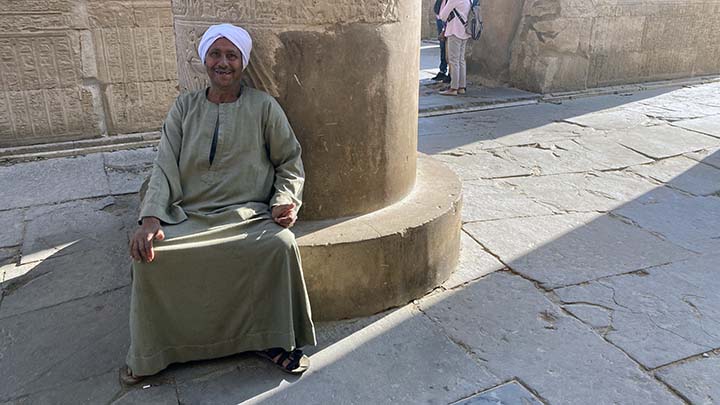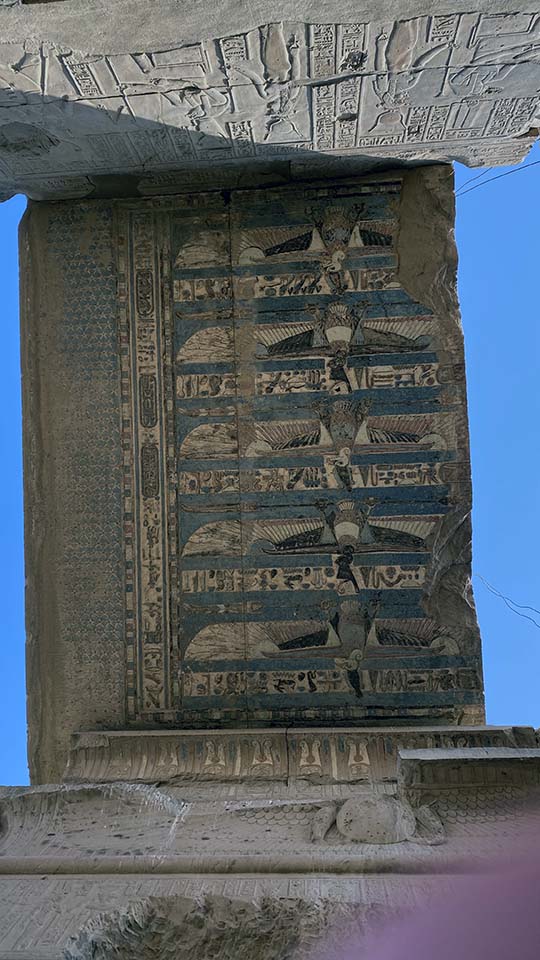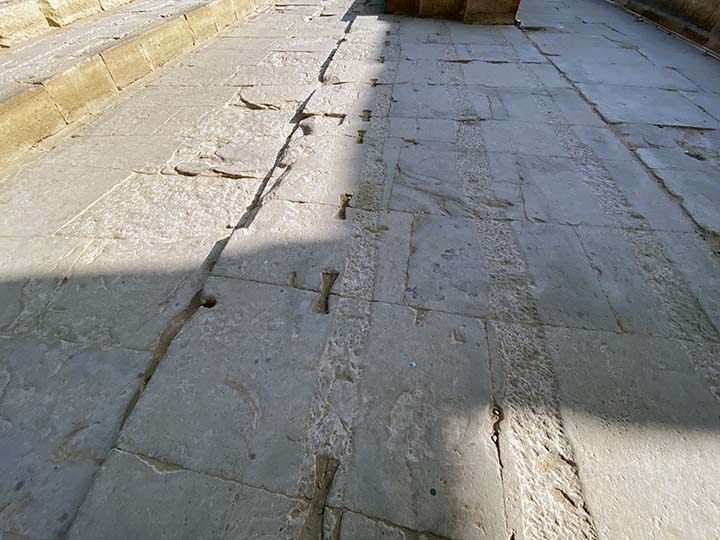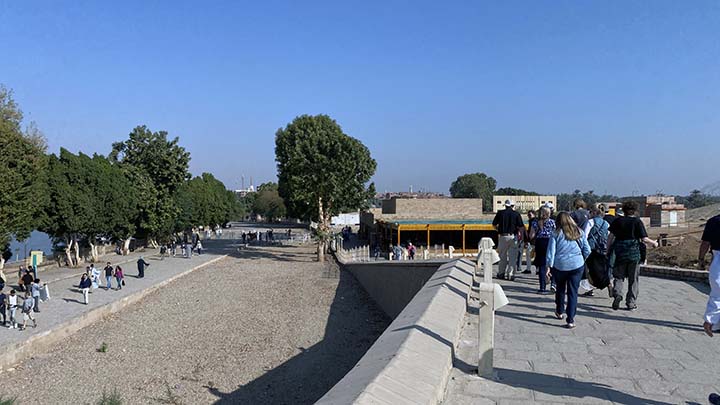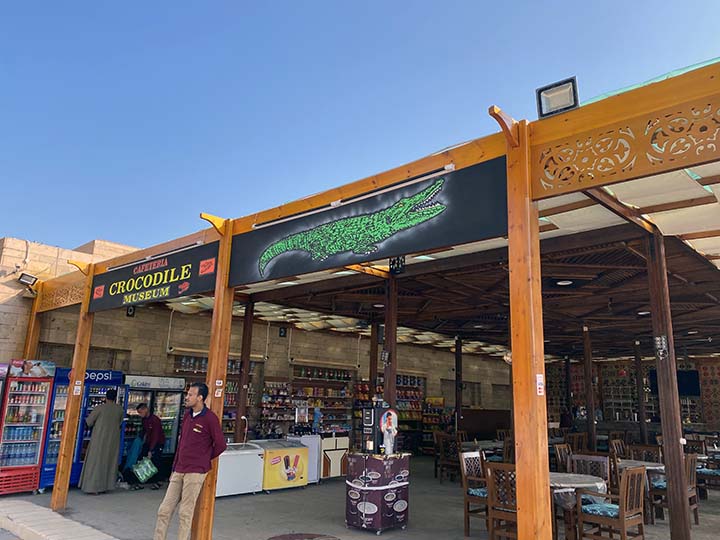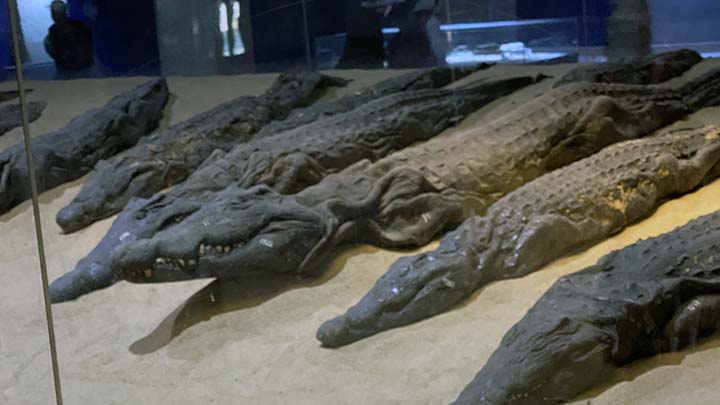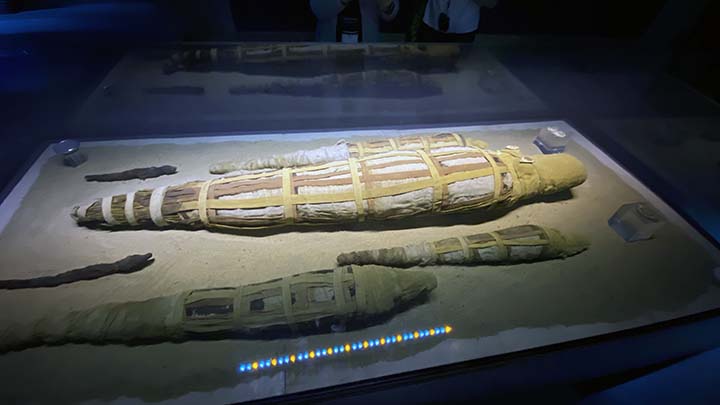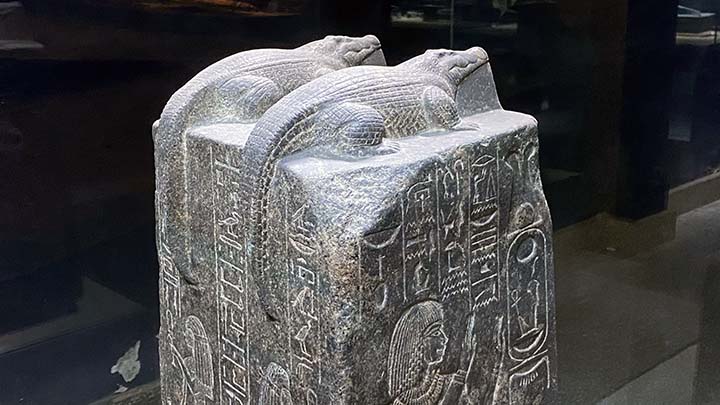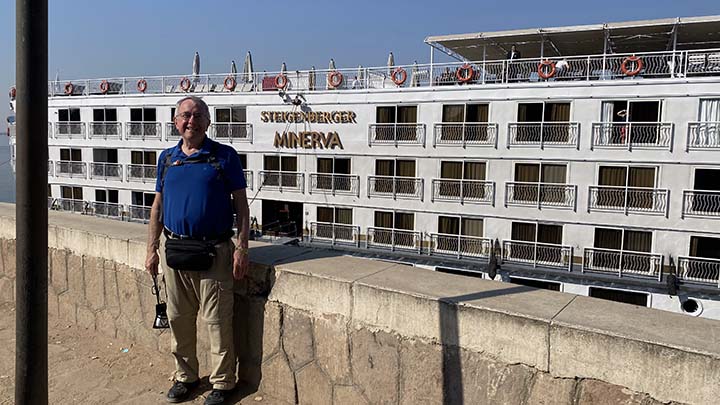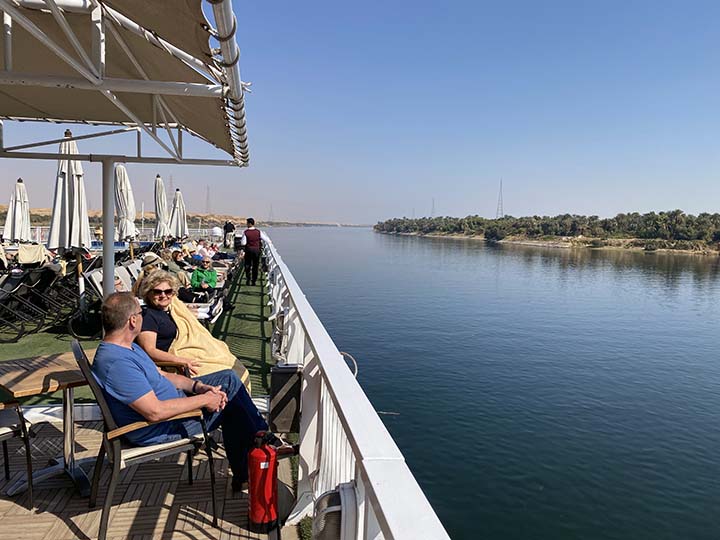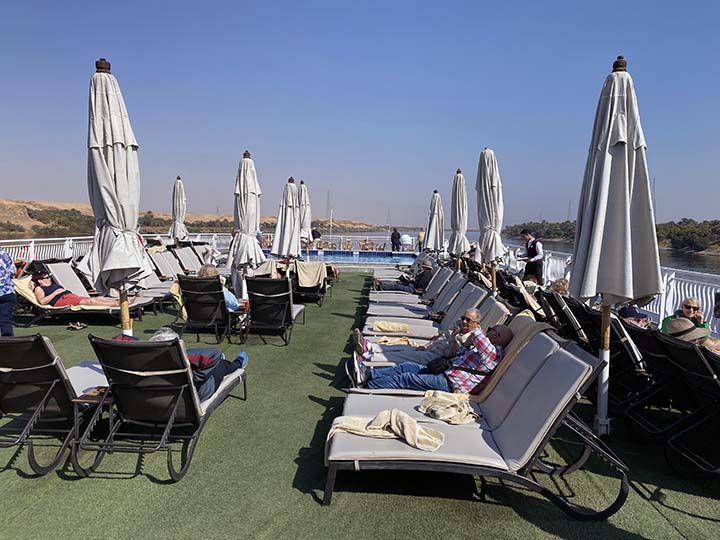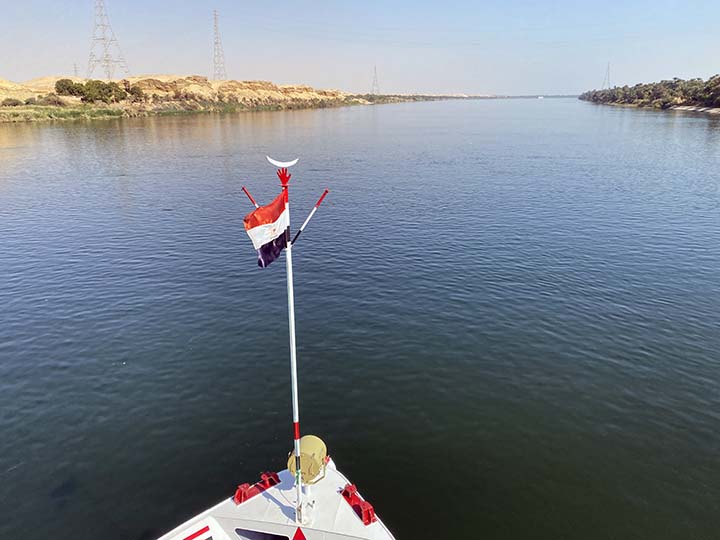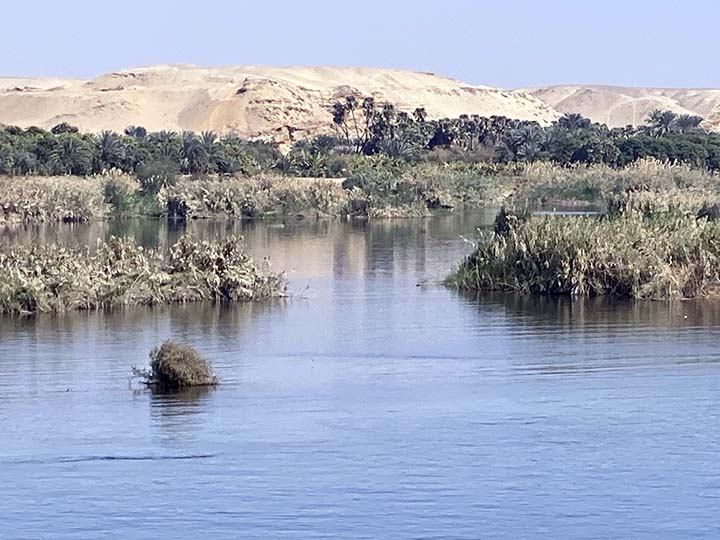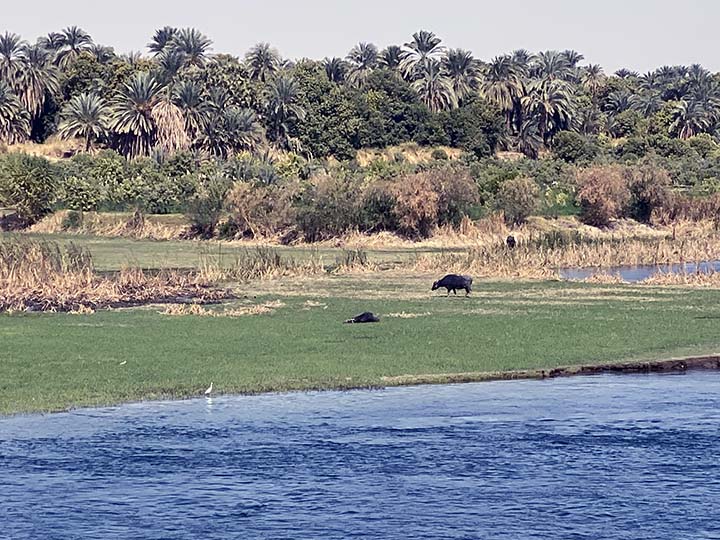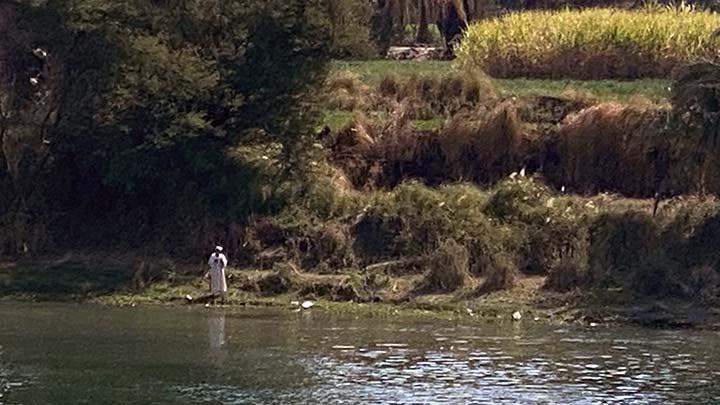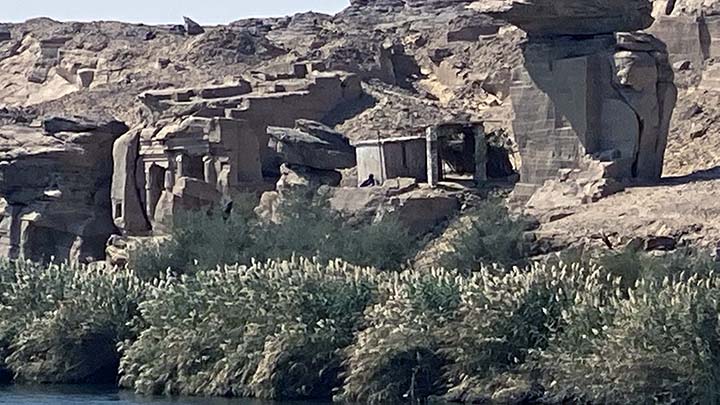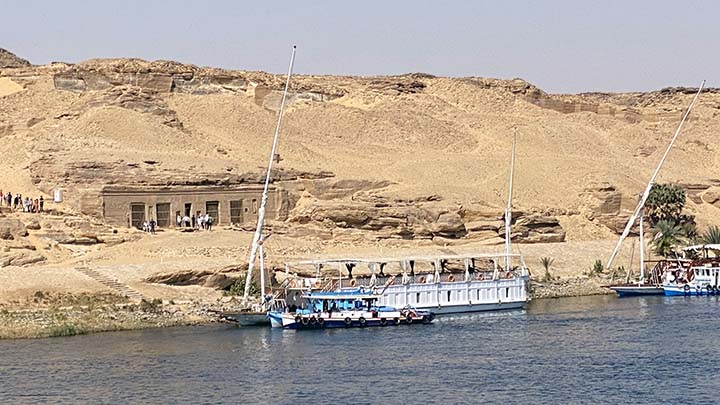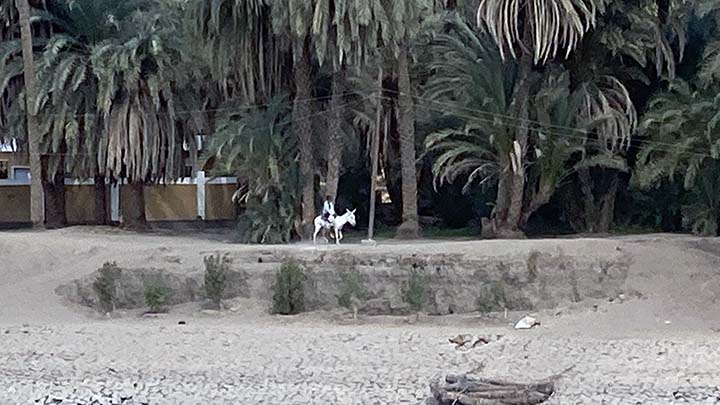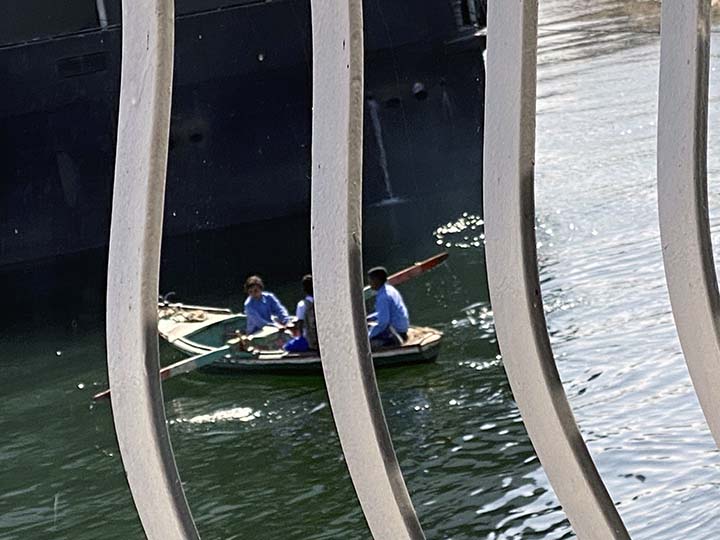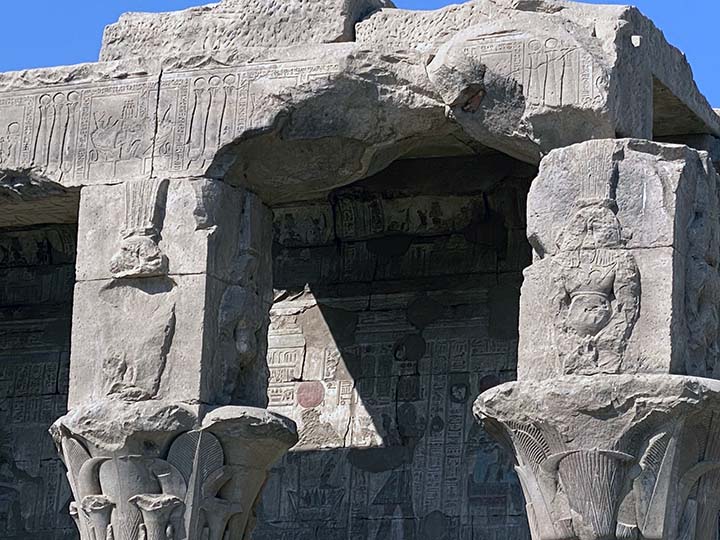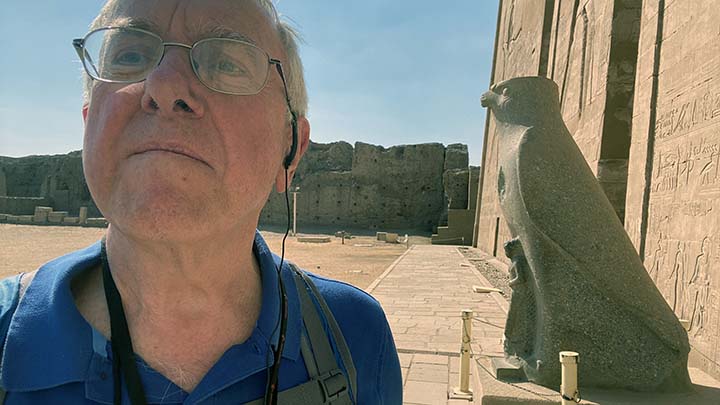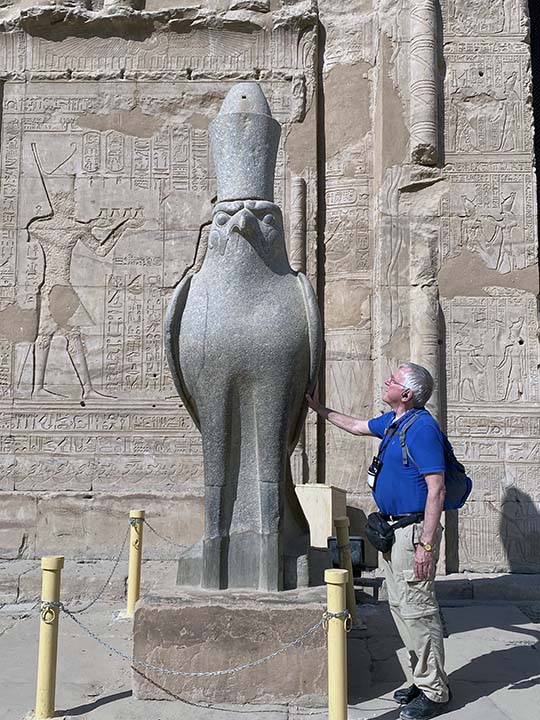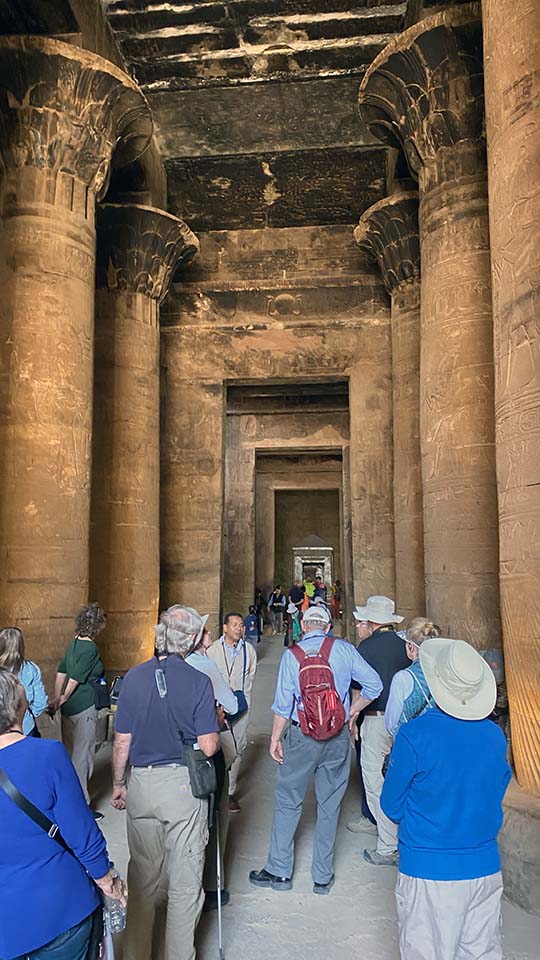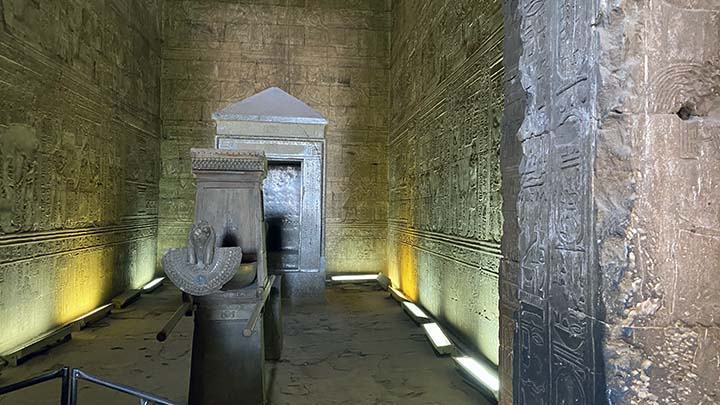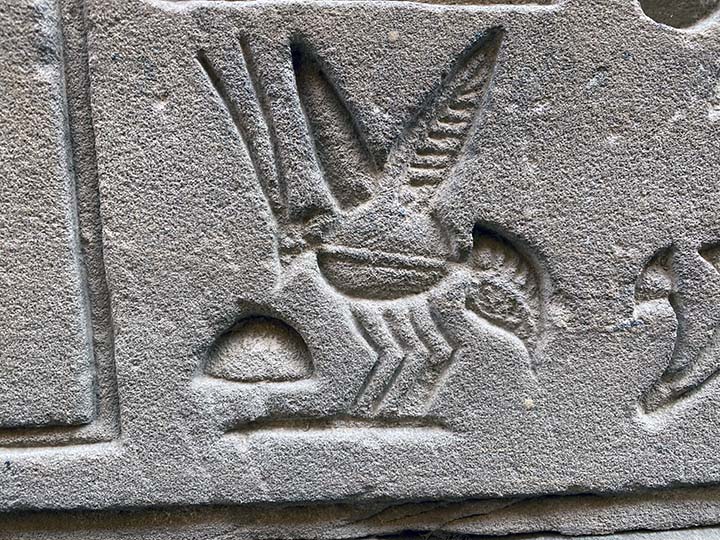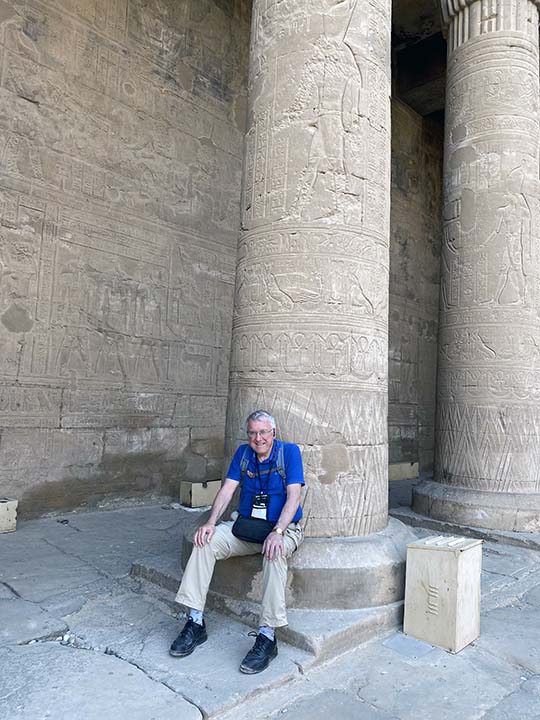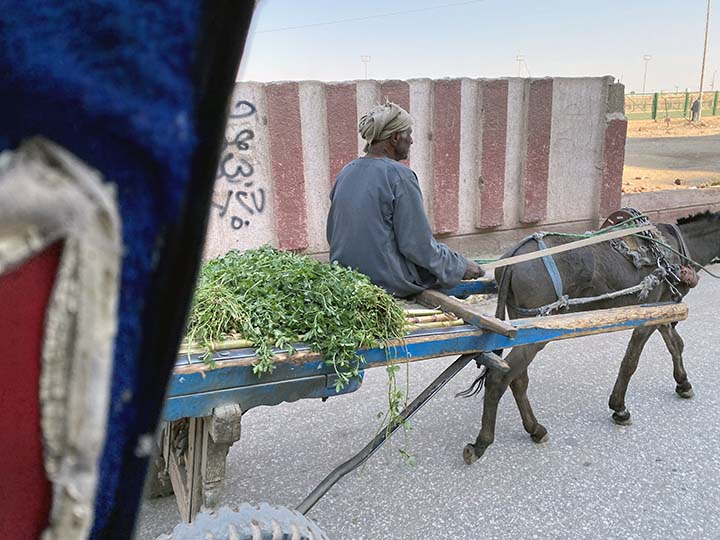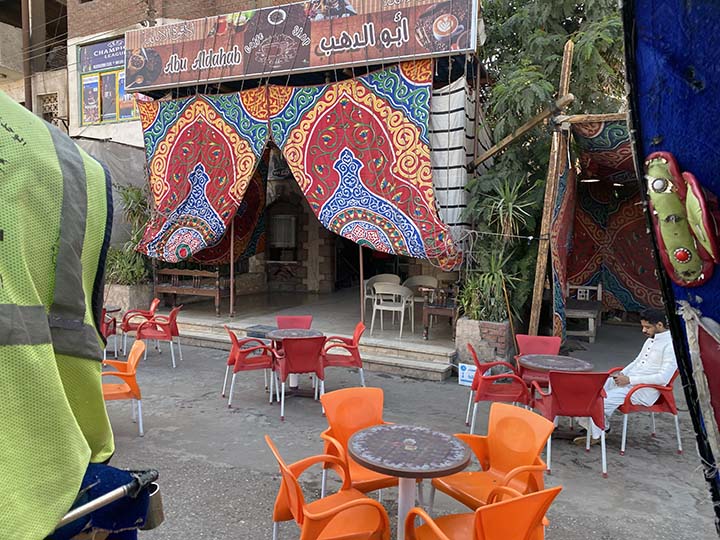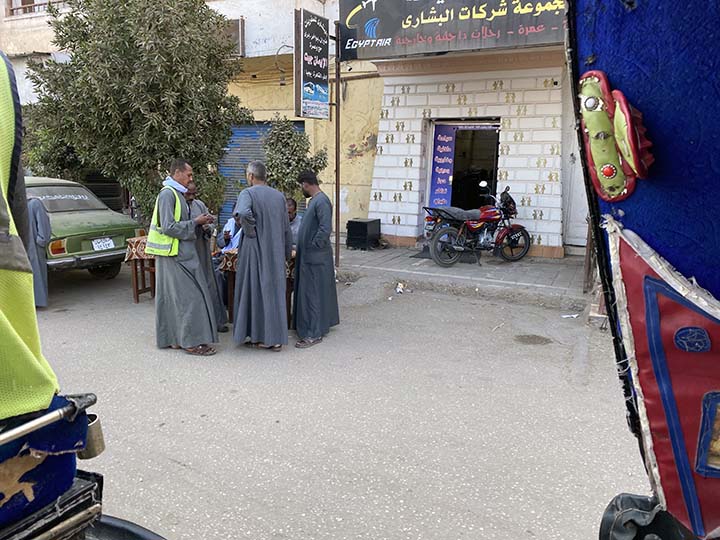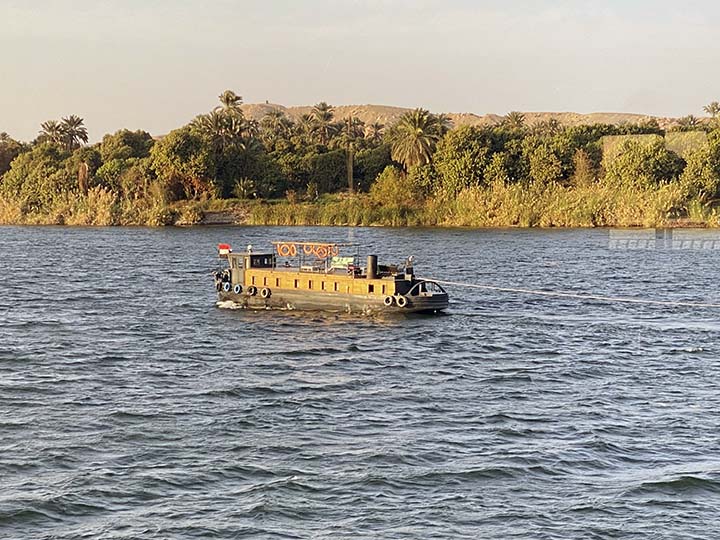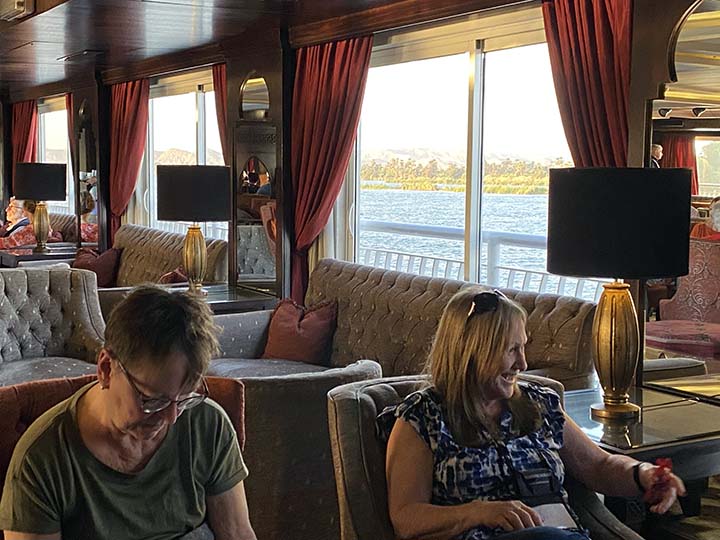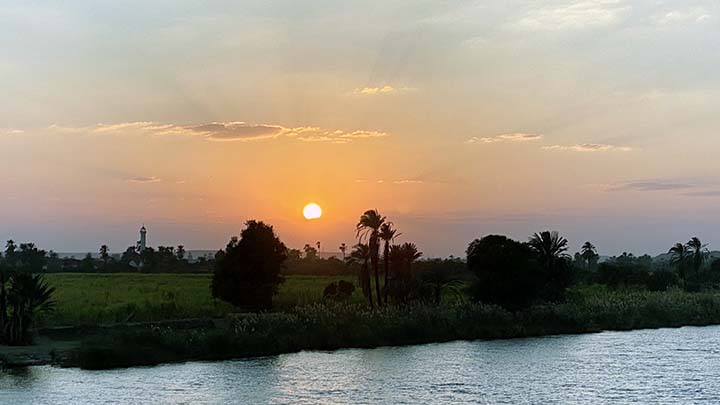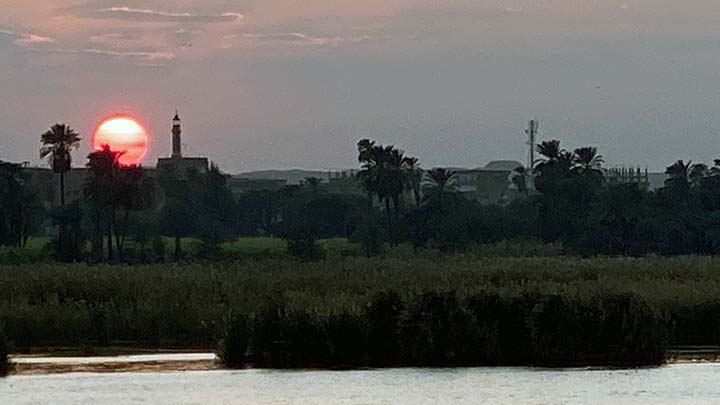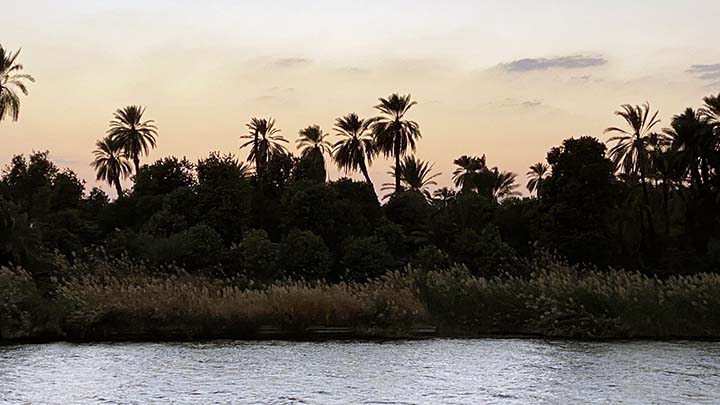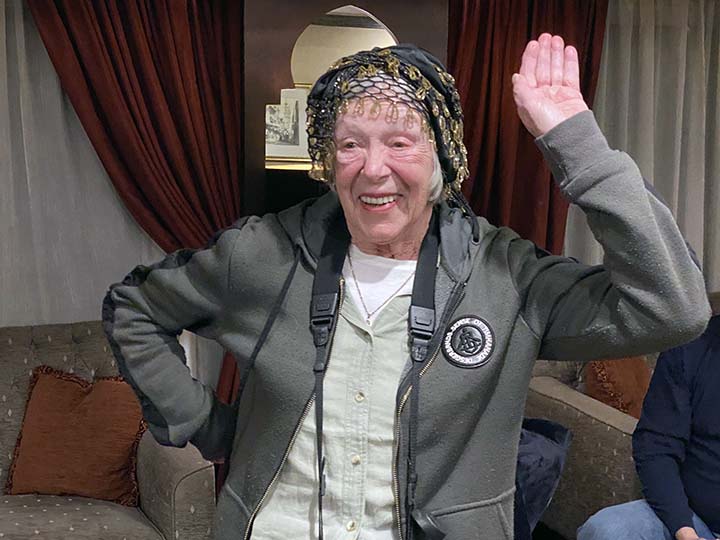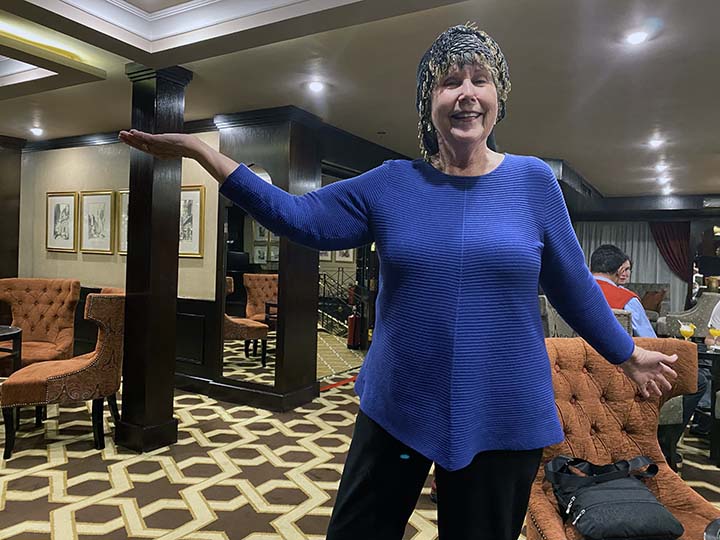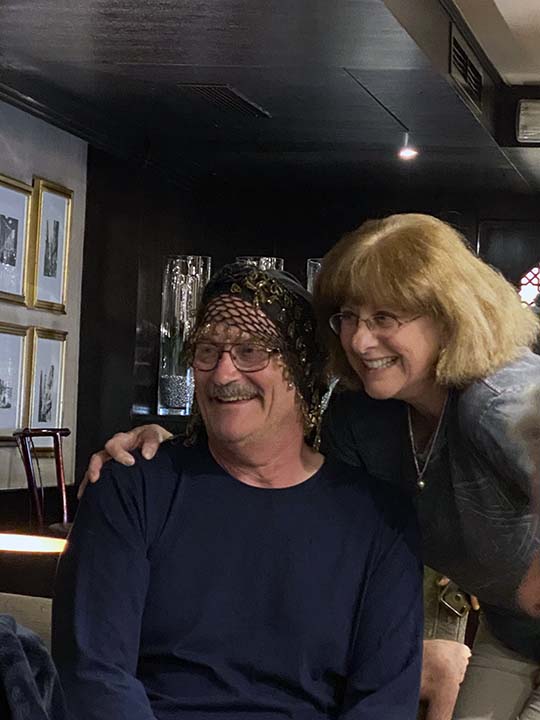|
Today we cruised down the Nile. Yes, the river Cleopatra cruised on. That Nile.
See how fertile land is just a strip along the river while the desert looms in the background?
It’s really no prettier than cruising down the Tennessee River or even the Mississippi. Unless you count palm trees and ancient ruins
Tourists coming upriver?
Nope. That was a tugboat pulling an empty tourist vessel upstream to Aswan where it will take on passengers for the cruise downstream.
Ruins along the Nile.
Farming along the Nile.
It's rich land, what little there is of it.
Egyptians have been living like this for millennia.
Sights along the Nile
It's a donkey.
It's another pretty sight.
We left Aswan in the middle of the night and by morning we had docked at the small river town of Kom Ombo.
That’s our boat, the Minerva.
That's more of out boat, the Minerva.
And that is our first glimpse of the ruins of Kom Ombo temple. In Arabic, the word “Kom” means “small hill” and “Ombo,” in ancient Egyptian language means the “gold.” So, Kom Ombo, in ancient languages was called the hill of the gold.
The Temple of Kom Ombo is an unusual double temple in the town of Kom Ombo in Aswan Governorate, Upper Egypt.
Much of the temple has been destroyed by the Nile, earthquakes, and later builders who used its stones for other projects. Some of the reliefs inside were defaced by Copts, who once used the temple as a church. All the temples buildings in the southern part of the plateau were cleared of debris and restored by Jacques de Morgan in 1893.
It was constructed during the Ptolemaic dynasty, 180–47 BC. Some additions to it were later made during the Roman period. The southern half of the temple was dedicated to the crocodile god Sobek, god of fertility and creator of the world with Hathor and Khonsu. Meanwhile, the northern part of the temple was dedicated to the falcon god Horus along with some others — who can keep track?
The scene on the inner face of the rear wall of the temple is of particular interest, and "probably represents a set of surgical instruments. In fact, the carvings could be very helpful if you want to be a doctor. It’s the world’s earliest itemization of a surgeon’s tool kit. See those two spoon like things At the bottom? Dilation and curettage. Those ancient Egyptian doctors knew their stuff.
The texts and reliefs in the temple refer to cultic liturgies which were similar to those from that time period. The temple itself had a specific theology. The characters invoked the gods of Kom Ombo and their legend.
Horus has the face of a falcon.
The texts and reliefs in the temple refer to cultic liturgies which were similar to those from that time period. The temple itself had a specific theology. The characters invoked the gods of Kom Ombo and their legend. Two themes were present in this temple: the universalist theme and the local theme. The two combine to form the theology of this temple.
The building is unique because its 'double' design meant that there were courts, halls, sanctuaries and rooms duplicated for two sets of gods. The southern half of the temple was dedicated to the crocodile god Sobek, god of fertility and creator of the world with Hathor and Khonsu. Meanwhile, the northern part of the temple was dedicated to the falcon god Haroeris ("Horus the Elder"), along "with Tasenetnofret (the Good Sister, a special form of Hathor or Tefnet/Tefnut) and Panebtawy (Lord of the Two Lands)." The temple is atypical because everything is perfectly symmetrical along the main axis.
A temple was already built in the New Kingdom to honor Sobek and Horus, however, this site gained in importance during the Ptolemaic Kingdom. Little remains of the New Kingdom temple. The existing temple was begun by Ptolemy VI Philometor (180–145 BC) at the beginning of his reign and added to by other Ptolemies, most notably Ptolemy XIII Theos Philopator (51–47 BC), who built the inner and outer hypostyles.
And their are aliens.
As usual the tourist pretty much can’t believe he’s actually here.
Even more amazing, some of the original paint job has lasted for 2300 years.
It gives you some idea of what the whole place must have looked like when it was brightly painted.
Rafik explains it all.
Some apparently unused sarcophagi.
The goddess Bastet had the face of a cat.
The sacred bird of wisdom.
Is it really real? Go on tourist, touch it. It’s real.
Still having trouble believing it.
This guy thinks the tourist touching everything is funny.
The paint has lasted because it's sheltered by being on the underside of what's left of this ceiling.
Those bowtie markings on the sidewalk are where they put plugs to prevent the blocks from slipping.
Let's go to the crocodile mummy museum.
Remember, there were two deities worshipped at the temple: Horus the falcon god and Sobek the crocodile god.
A few of the three hundred crocodile mummies discovered in the vicinity are displayed in The Crocodile Museum. I think one of them is smiling at me..
They did like to take care of their dead crocodiles.
The crocodile god Sobek was a bad guy in the Egyptian pantheon. Something to do with stealing women.
The tourist was ready for some rest in his room on the Minerva.
But he found a scorpion in his bed.
Up on the sun deck it was breezy, sunny and cool. I started out in a polo shirt, and soon went down to the cabin for a sweater and a jacket and a hat. It is winter in Egypt after all.
Still, I think I would rather be here when it’s cool than in summer when it’s 120°.
Let's cruise the Nile down to Edfu.
This picture just reinforces what I learned in elementary school: Nile flooding provides fertile land, in a narrow strip through a desert.
We are not the only boat on the Nile.
We saw cattle.
We saw fishermen.
We spotted ruins and rock quarries along the banks.
See? Rock quarry.
Here are tourists visiting a quarry.
The narrow strips of fertile land along either bank of the Nile are still home to lots of people.
Nap time.
But there's no escaping activity outside my window. Next we'll visit another Temple of Horus, this one at Edfu.
You can't get to Horus in this town without taking a buggy ride. The Edfu locals seem nice, though..
They don't get in our driver's way.
Join us on the ride. It will be bumpy and smelly, but lots of fun!
Over the centuries, the temple became buried to a depth of 39 ft beneath drifting desert sand and layers of river silt deposited by the Nile. Local inhabitants built homes directly over the former temple grounds. Only the upper reaches of the temple pylons were visible by 1798, when the temple was identified by a French expedition. In 1860 Auguste Mariette, a French Egyptologist, began the work of freeing Edfu temple from the sands.
The Temple of Edfu is located on the west bank of the Nile in Edfu, Upper Egypt. The city was known in the Hellenistic period in Latin as Apollonopolis Magna, after the chief god Horus, who was identified as Apollo under the interpretatio graeca. It is one of the best preserved shrines in Egypt. Teth.
The temple was built in the Ptolemaic Kingdom between 237 and 57 BC. The inscriptions on its walls provide important information on language, myth and religion during the Hellenistic period in Egypt. In particular, the Temple's inscribed building texts "provide details [both] of its construction, and also preserve information about the mythical interpretation of this and all other temples as the Island of Creation." There are also "important scenes and inscriptions of the Sacred Drama which related the age-old conflict between Horus and Seth. The fact that it was covered up in sand for so long explains why some of its carvings are still in great shape.
Here is a depiction of a solar disk flanked by 2 cobras and outspread wings. The solar disk represents Ra, the sun god. The cobras represent the Uraeuses (Wadjet and Nekhbet) and the falcon wings represent Horus. It’s a symbol of protection often occurring on a cavetto cornice. The Winged Sun Disc is thought to have originated from the corona effect of a solar eclipse which can give the appearance of wings. The symbol was adopted by modern culture and can now be found protecting the dead in cemeteries throughout the world.
The tourist thinks he looks like Horus.
He's got the belly but he doesn't quite have the beak for it.
They used to think somebody tried to burn the place down and that’s why the ceiling is covered in black, but it turns out that’s just mold.
The temple has plenty of big rooms with walls carved top to bottom with hieroglyphics and figures.
That’s an ancient carving of a bee.
The tourist loves it but now he's had enough.
Time to buggy ride back to the boat.
And take in more of the colorful sights of Edfu along the way.
Local power brokers.
It may not be the swankiest apartment building in town, but if you want a balcony you've come to the right place.
Back on the water.
Some of the Road Scholars are ready to rest and relax in the ship's lounge.
While up top others continue taking in the sights along the Nile.
Because when are we ever going to do this again?
Sure, we'll see more sunsets...but this is a NILE RIVER sunset!
And the Nile knows how to do them up right.
That was breathtaking.
Meanwhile back in the lounge.
It's a fashion show.
Everybody wanted to try on the Egyptian headgear. Cindy looks great.
And so does Tim, I suppose.
And if our own entertainment wasn't enough, look what the crew did at dinner!
We even went through a lock on our cruise down the Nile.
|


